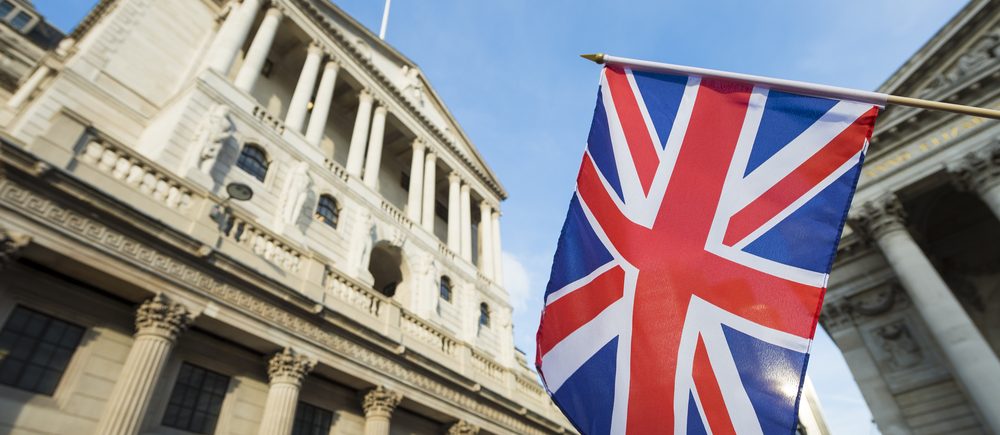Several economists believe the cost of borrowing will increase several times this year. UK inflation is expected to rise to a 30-year high when December’s data are released on Wednesday as upward cost pressures are felt across the economy. Economists polled by Reuters forecast inflation to hit 5.2 per cent, the joint highest since the early 1990s and up from a decade-high of 5.1 per cent in November.
They attribute the upward price pressure to higher energy costs, strong demand for most goods and services, and continued supply chain disruption. While economic forecasts are more uncertain than usual during the pandemic, most experts predict inflation will peak in April, prompting expectations that the Bank of England will increase its key interest rate several times this year.
Line chart of Annual change on consumer price index, by percentage, is showing UK inflation is set to rise further. The December data will be the last before the BoE’s Monetary Policy Committee meets on 3 February to consider and decide whether to increase rates again, following the 15 basis points rate rise to 0.25 per cent in December which was the first in more than three years.
On account of the current elevated level of inflation, the UK, is penciling in three interest rate rises this year, which would represent a shift towards a significantly tighter monetary policy outlook. Inflation is poised to rise to almost 7 per cent in April when Ofgem, the energy regulator, will increase its default energy tariff price cap. If confirmed, that would be more than three times the BoE target of 2 per cent, which some economists believe could justify four rate hikes this year to 1.25 per cent.
Most advanced countries, like the UK, are suffering from high inflation, reflecting surging global energy costs. In December, inflation rose at the fastest pace since 1982 in the US and was the strongest since the creation of the euro. In the UK, the energy consumer price index rose by a heavy annual rate of 26 per cent in November, contributing 1.5 percentage points to the overall annual rate and pushing up household bills and transport costs.
All the main sectors are driving UK inflation higher Core annual inflation, which excludes energy, food and alcoholic drinks, jumped to 4 per cent in November, the highest in nearly 30 years. Trimmed mean annual inflation; namely the pace of price growth excluding the 5 per cent highest and lowest price changes, doubled in the five months to November to 3.4 per cent, according to calculations by the National Institute of Economic and Social Research.
Consumer inflation is currently higher for goods than services, reflecting more intense supply disruption and robust demand. Goods supply has been vastly outstripped by demand, with supply disruptions adding to the shortage, and the result is higher goods prices. This is particularly the case for second-hand cars, whose price rose by an annual rate of more than 27 per cent in November, providing its largest contribution to inflation since the data was first recorded in 1989 as people sought alternatives to public transport while there was a limited supply of new cars.
Prices of sports and camping equipment, for which demand has surged during the pandemic, rose at their fastest pace on record. Economists warned that disruption caused by the Omicron coronavirus variant will delay the rotation in consumer spending back from goods to services, possibly resulting in further upward pressure on global goods prices in early 2022.
Prices are also rising for food which, together with energy prices, hit the poorest households hardest as those items account for a larger share of their spending. In November, the annual rate of food prices more than doubled from the previous month to 2.5 per cent. Line chart of Annual % change on consumer price index showing UK inflation is higher for goods, but even for the services sector, where demand has been limited by social distancing measures and fears of infection, inflation rose to 3.3 per cent in November, about double its pace in July, reflecting rising costs and wages. Prices of accommodation, such as hotels, have risen at a double-digit rate for most of the past four months.
Inflation figures showed further signs of broadening, including in services, adding to “pressure on the MPC to hike rates early, and possibly vigorously, this year”. High inflation is also geographically widespread, with consumer prices rising across all regions. London is experiencing the fastest increase in prices and Northern Ireland the lowest. The Bank of England expects inflation to fall quite quickly from the second half of 2022 and to keep falling in 2023 as the disruption of the pandemic to supply and demand weakens.
Most economists expect a similar trend, with base effects contributing to a lower annual rate as prices this year will be compared with their high levels in 2021.

BoE
 Noor Trends News, Technical Analysis, Educational Tools and Recommendations
Noor Trends News, Technical Analysis, Educational Tools and Recommendations




